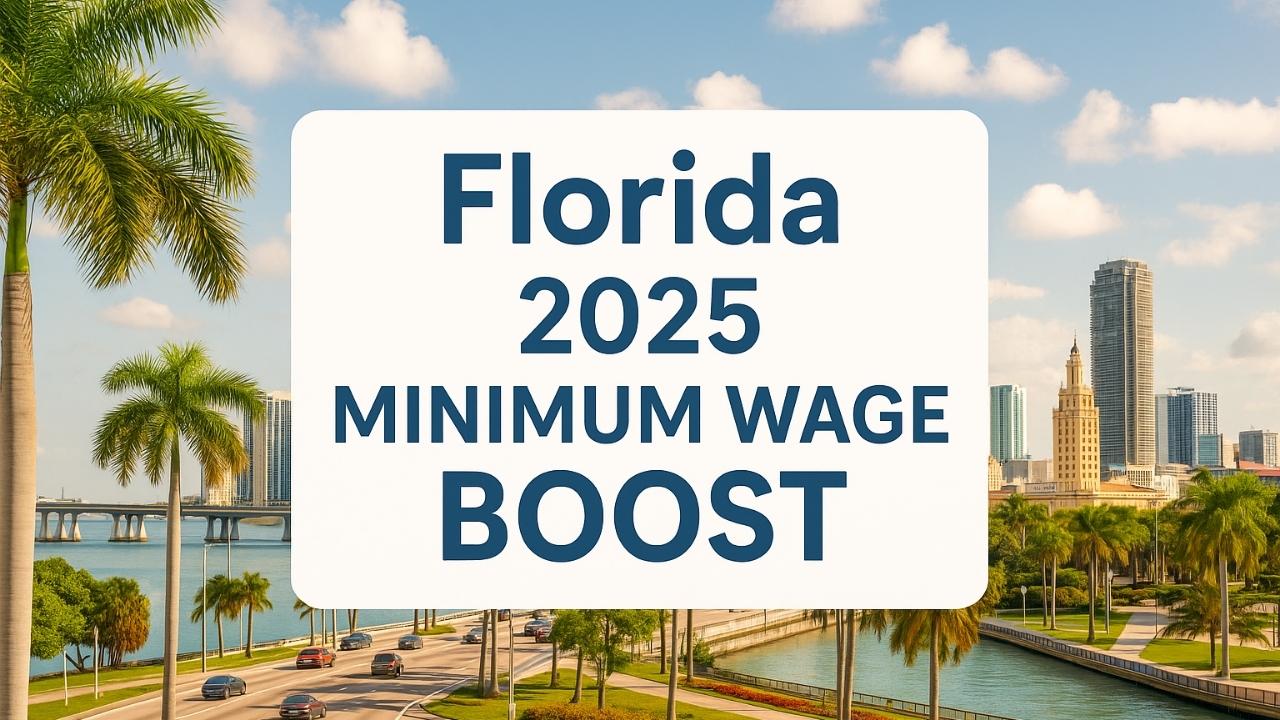Florida’s workforce is set to receive a timely financial boost in 2025 with the increase in the minimum wage rate as part of the state’s ongoing wage reform. Starting September 30, 2025, the minimum wage will rise to $14.00 per hour for standard workers and $10.98 per hour for tipped employees. This increase is the fifth installment of a broader plan enacted by a constitutional amendment passed by Florida voters in 2020.
This strategic wage growth comes as part of Florida’s goal to reach a $15.00 per hour minimum wage for regular workers by 2026. It aims to support individuals and families struggling with increasing living expenses, from rent and utility bills to food and healthcare. The annual $1 hike model, while predictable, serves as a reliable method for both employers and employees to plan finances and operations.
Under the current law, after reaching the $15 milestone in 2026, future adjustments will be tied to inflation indexes, ensuring wages remain competitive with cost-of-living fluctuations. This makes the 2025 increment a key transitional step in this legally mandated wage strategy.
Florida Minimum Wage 2025 Implementation

The wage increase was enacted as part of Amendment 2, a ballot initiative approved by Florida voters in November 2020. The amendment lays out a step-by-step plan for annual minimum wage increases from 2021 to 2026. Below is a table summarizing the statutory schedule of the current and upcoming rates:
| Year | Standard Minimum Wage | Tipped Minimum Wage |
|---|---|---|
| 2021 | $10.00 | $6.98 |
| 2022 | $11.00 | $7.98 |
| 2023 | $12.00 | $8.98 |
| 2024 | $13.00 | $9.98 |
| 2025 | $14.00 | $10.98 |
| 2026 | $15.00 | $11.98 |
The consistent $1 increase annually shows a deliberate and phased approach, preventing sudden economic shocks while boosting workers’ take-home pay.
Worker Categories That Will Gain the Most
This wage adjustment is projected to benefit a wide range of employees, particularly those in traditionally lower-wage roles. It enhances financial support across industries and workforce categories.
Employees who will benefit include:
- Retail and customer service representatives working at supermarkets, convenience stores, and clothing chains.
- Food service employees, including cooks, waiters, dishwashers, and drive-thru staff at restaurants and cafes.
- Home care and nursing assistants involved in personal support work for the elderly and disabled.
- Housekeeping, janitorial, and maintenance workers, including those employed by hotels, schools, and cleaning agencies.
- Farm and seasonal workers, especially in Florida’s agricultural regions.
By extending minimum wage protections to these occupations, the state is moving toward a more inclusive wage policy. This benefits both full-time workers and many part-time and seasonal employees who have limited bargaining power.
Regional Comparison of U.S. Minimum Wages in 2025
Florida’s new minimum wage positions it favorably compared to other states, particularly in the southeastern United States, where wage levels tend to be lower. However, some other states and districts have moved ahead with more aggressive wage laws.
| State/District | Minimum Wage (2025) |
|---|---|
| Washington D.C. | $17.50 |
| Washington State | $16.66 |
| California | $16.50 |
| New York | $16.50 |
| Connecticut | $16.35 |
| New Jersey | $15.49 |
| Oregon | $15.00 (Urban) |
| Florida | $14.00 |
While Florida has not yet reached the highest national levels, it leads among many southern states and is considered to be moving toward the forefront of worker-friendly wage policy in the region.
Legal and Economic Impact of the 2025 Increase
The primary objective behind this wage policy is to ensure that minimum-wage workers are able to meet their essential needs. Florida’s minimum wage law covers nearly all employees except for certain exemptions, such as executive and administrative roles, certain student workers, and those working in family-run small businesses.
There are also secondary economic effects that come with this kind of policy. The increase is expected to contribute positively to local economies by boosting consumer spending. Workers with more disposable income are likely to spend more in local businesses, fueling further economic activity. Employers, on the other hand, are adapting through improved efficiency, automation, or price adjustments to accommodate higher payroll expenses.
For employees in tipped roles, the law ensures they are compensated up to the minimum wage when combined with gratuities. If tips do not bring a worker’s hourly rate up to the required minimum, employers must make up the difference.
Information for Florida Employees and Employers
Understanding the fine print of the 2025 wage change is important for both employees and businesses. Here are the most critical points to remember:
For Employees:
- The new hourly rate of $14.00 applies to most hourly workers regardless of age or employment sector.
- Tipped employees will earn $10.98 per hour, excluding tips.
- Employers are required to post an updated minimum wage notice in a visible location at the workplace.
- Employers must compensate for the shortfall if tips do not equal the minimum.
For Employers:
- Wage compliance begins September 30, 2025.
- Businesses must ensure payroll systems reflect the updated rates.
- Non-compliance can result in penalties and legal action.
- Employers should keep updated with Department of Labor (DOL) notices and adjust hiring contracts accordingly.
This clarity helps both sides of the labor market prepare for the policy shift and minimize confusion during implementation.